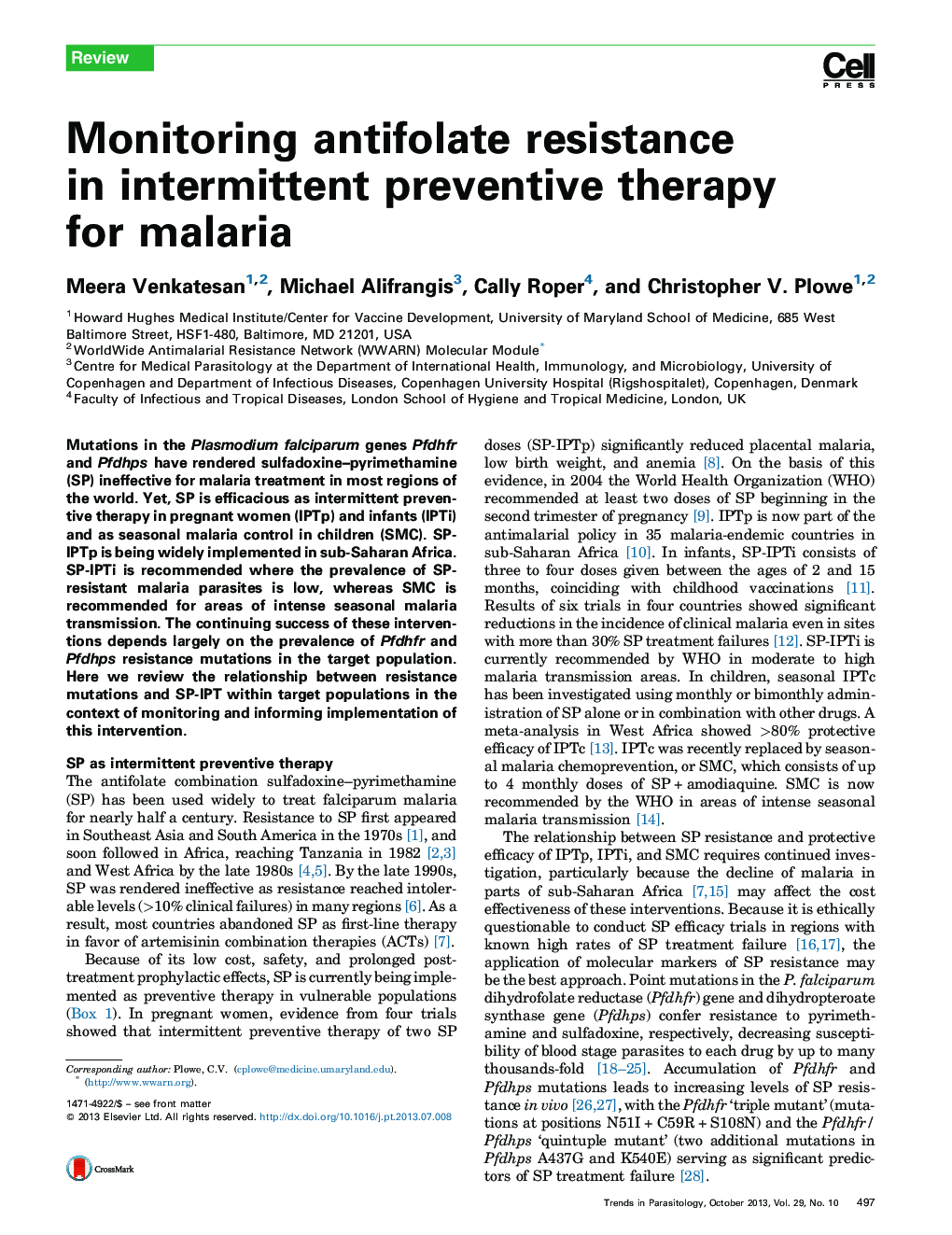| Article ID | Journal | Published Year | Pages | File Type |
|---|---|---|---|---|
| 3423080 | Trends in Parasitology | 2013 | 8 Pages |
•We identify gaps in surveillance of SP resistance to inform IPT policy.•Molecular resistance thresholds for SP-IPTp and SMC are needed.•IPT selection of drug-resistance mutations should be monitored.•Data on SP resistance should be widely shared to improve global monitoring.
Mutations in the Plasmodium falciparum genes Pfdhfr and Pfdhps have rendered sulfadoxine–pyrimethamine (SP) ineffective for malaria treatment in most regions of the world. Yet, SP is efficacious as intermittent preventive therapy in pregnant women (IPTp) and infants (IPTi) and as seasonal malaria control in children (SMC). SP-IPTp is being widely implemented in sub-Saharan Africa. SP-IPTi is recommended where the prevalence of SP-resistant malaria parasites is low, whereas SMC is recommended for areas of intense seasonal malaria transmission. The continuing success of these interventions depends largely on the prevalence of Pfdhfr and Pfdhps resistance mutations in the target population. Here we review the relationship between resistance mutations and SP-IPT within target populations in the context of monitoring and informing implementation of this intervention.
